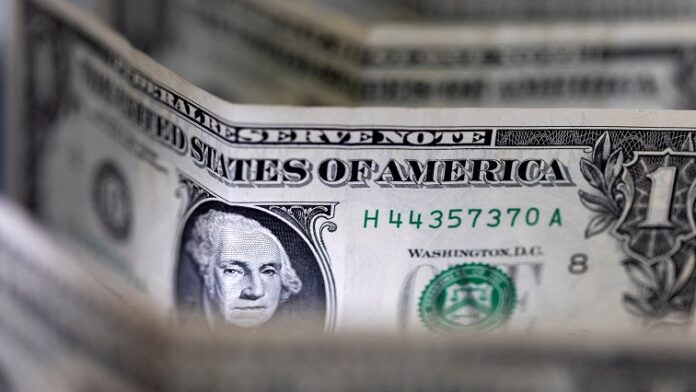The dollar hovers near six-week lows on Tuesday as signs of economic damage from the trade war under President Donald Trump’s administration weigh on sentiment.
While global equity markets broadly recover amid shifting tariff threats, the greenback remains under pressure. Upcoming factory and jobs data may provide further evidence of how trade uncertainty is affecting the U.S. economy.
U.S. duties on imported steel and aluminium are set to double to 50% beginning Wednesday, the same day the administration expects countries to submit their best offers in trade talks. The dollar index, which measures the U.S. currency against six others, touches 98.58, the lowest since late April, before rising 0.5%. The dollar rises 0.26% against the yen to 143.075.
The euro falls 0.44% to $1.1392 after briefly hitting a six-week high of $1.1454.
Earlier data shows euro zone inflation falling below the European Central Bank’s 2% target, reinforcing expectations for a rate cut this week. The dollar slips broadly on Monday after data shows U.S. manufacturing contracts for a third straight month in May, with trade snarls delaying supplier deliveries.
Focus now turns to U.S. factory order numbers on Tuesday and jobs data later in the week.
The dollar sees some relief last week, climbing 0.3% as U.S.-EU trade talks resume and a trade court blocks most of Trump’s tariffs. An appeals court reinstates the duties a day later, and the administration says it has alternative ways to impose them if it loses in court.
Trump and Chinese President Xi Jinping are expected to speak soon to address trade differences, according to Treasury Secretary Scott Bessent. On Monday, China’s Commerce Ministry responds to U.S. claims that Beijing violated their trade deal.
Reports indicate China is gaining leverage over the U.S. by controlling chip supply chains and rare earths.
Fiscal concerns add pressure to the dollar as a broader “sell America” trend leads to declines in stocks and Treasury bonds. The Senate this week begins reviewing the administration’s tax cut and spending bill, projected to add $3.8 trillion to the federal government’s $36.2 trillion debt over the next decade.























